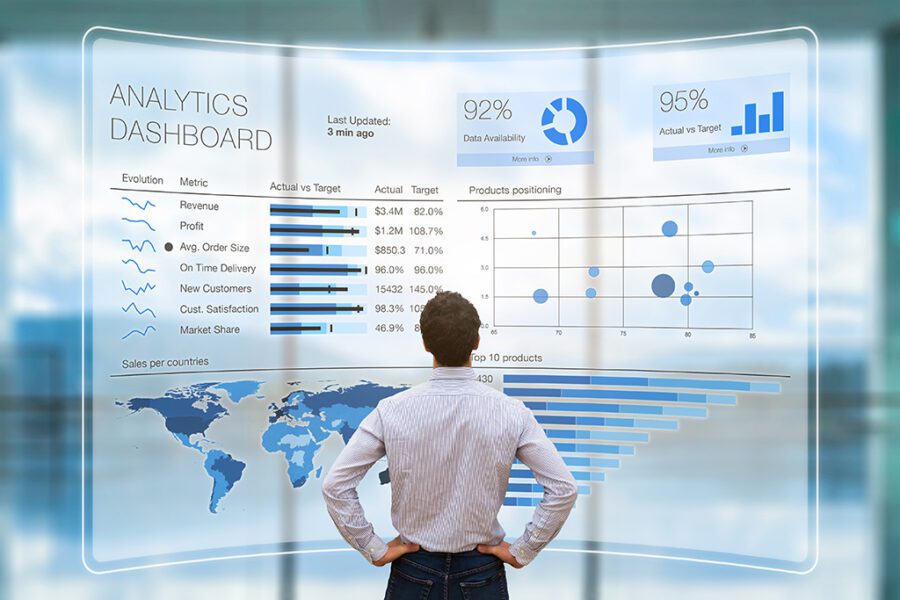In the current business world data is an essential asset that can either make or break an enterprise. Power BI, Microsoft Fabric and other tools that are powerful can be used by companies to maximize the potential of their data. These platforms form the heart of business intelligence and, when used in conjunction with Azure Data Factory they become an effective tool in data analytics and decision-making.
Power BI Your Business Intelligence Companion
Power BI, a product from Microsoft, is a comprehensive business intelligence software designed to aid organizations in analyzing and share insights from their data. Power BI lets users create interactive reports and dashboards and transforms raw data into actionable information.

Power BI can be tailored to meet your individual needs, whether you are an entrepreneur or a major enterprise. Power BI seamlessly integrates many data sources and makes it easy to integrate data from different systems and databases. Even non-technical users are able to create powerful reports and analyses using its simple drag-and-drop interface.
The Power BI platform supports real-time processing of data, ensuring you’re always working with the most recent data. It offers a wide array of visualisations, which allows you to display data in a digestible and compelling way. Collaboration and sharing of reports with colleagues can improve decision-making and encourages a data-driven business culture within your organization.
Microsoft Fabric: The Weaving of Data Innovation
Microsoft Fabric is the fundamental system that connects and manages data across various Microsoft services. Fabric is the thread that ties your data into one and usable entity, allowing companies to get insights easily.
As businesses deal with ever-increasing volume of data, Microsoft Fabric provides the base for data consistency and integrity. Microsoft Fabric incorporates a range of services, such as Azure Data Lake Storage (Azure SQL Data Warehouse), Power BI, and many more. The interconnectedness of the platform allows data flow and insight from multiple sources.
Microsoft Fabric’s data transformation capabilities provide a wonderful illustration of its flexibility. It is a great tool to wrangle data, cleanse and make it ready for analysis, and also ensure that it conforms to the company’s policies on data governance. Microsoft Fabric is the system that guarantees your data is reliable and accurate. It is also well-prepared for analytics.
Azure Data Factory: the Gateway to Data Transformation
Azure Data Factory is another essential component in the modern business intelligence landscape. It is a cloud data integration service that lets you design, schedule and manage workflows that are based on data. Azure Data Factory allows for meaningful insights by orchestrating the transformation of data and its movement.
One of the key advantages of Azure Data Factory is its versatility in connecting to a variety of data sources. It doesn’t matter whether your data is stored in the cloud or in your premises, you can integrate it easily to provide a comprehensive overview of your data’s ecosystem. It supports batch processing, stream data in real-time, and big analysis of data. This makes it ideal for many use instances.
Azure Data Factory offers a visual interface that makes it easier to manage the creation of data pipelines. It’s simple to design and schedule data workflows, even when you’re not a coder. This empowers business users to manage their data integration workflows and opens the door to self-service data preparation.
Power BI with Microsoft Fabric, Azure Data Factory, and Power BI
If Power BI and Azure Data Factory are paired to create a formidable trio that will enhance your data analysis capabilities. How do they work together?
1. Data Integration: Azure Data Factory connects to a myriad of data sources to ensure that your data is accessible. Microsoft Fabric orchestrates the data that comes from different services through this data integration capability. This will ensure that your data is properly arranged, cleaned and then it is ready for Power BI analysis.
2. Data Transformation: Microsoft Fabric is a important component of data transformation. It lets you transform your data to meet your requirements. Fabric is a powerful instrument to transform data cleaning, data cleansing and data manipulation.
3. Power BI is able to assist after the data is analyzed and refined. Power BI lets you make visually appealing reports and dashboards that make difficult data understandable. These insights can be shared with your team to enable data-driven decision-making.
4. Scalability: Azure Data Factory scales effortlessly to handle increasing data volumes. The combined power of Power BI and Microsoft Fabric guarantees that your data is reliable and consistent when your business grows.
5. Power BI and Azure Data Factory offer real-time insights which are essential for making agile decisions.
Also, you can read our conclusion.
To be competitive in the business intelligence world businesses must be able to leverage data efficiently. Power BI combined with Microsoft Fabric and Azure Data Factory can take your business analytics to a new level. This trio can help users create stunning visualizations that improve data consistency and speed up workflows. Unlock the potential of data with business intelligence.